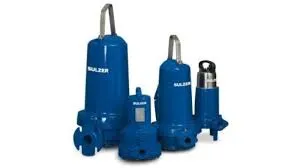English
- Afrikaans
- Albanian
- Amharic
- Arabic
- Armenian
- Azerbaijani
- Basque
- Belarusian
- Bengali
- Bosnian
- Bulgarian
- Catalan
- Cebuano
- Corsican
- Croatian
- Czech
- Danish
- Dutch
- English
- Esperanto
- Estonian
- Finnish
- French
- Frisian
- Galician
- Georgian
- German
- Greek
- Gujarati
- Haitian Creole
- hausa
- hawaiian
- Hebrew
- Hindi
- Miao
- Hungarian
- Icelandic
- igbo
- Indonesian
- irish
- Italian
- Japanese
- Javanese
- Kannada
- kazakh
- Khmer
- Rwandese
- Korean
- Kurdish
- Kyrgyz
- Lao
- Latin
- Latvian
- Lithuanian
- Luxembourgish
- Macedonian
- Malgashi
- Malay
- Malayalam
- Maltese
- Maori
- Marathi
- Mongolian
- Myanmar
- Nepali
- Norwegian
- Norwegian
- Occitan
- Pashto
- Persian
- Polish
- Portuguese
- Punjabi
- Romanian
- Russian
- Samoan
- Scottish Gaelic
- Serbian
- Sesotho
- Shona
- Sindhi
- Sinhala
- Slovak
- Slovenian
- Somali
- Spanish
- Sundanese
- Swahili
- Swedish
- Tagalog
- Tajik
- Tamil
- Tatar
- Telugu
- Thai
- Turkish
- Turkmen
- Ukrainian
- Urdu
- Uighur
- Uzbek
- Vietnamese
- Welsh
- Bantu
- Yiddish
- Yoruba
- Zulu
Telephone: +86 13120555503
Email: frank@cypump.com
Nov . 15, 2024 15:30 Back to list
septic submersible pump
The Role of Septic Submersible Pumps in Wastewater Management
Septic submersible pumps play a crucial role in modern wastewater management, particularly in rural and suburban areas where traditional sewage systems are not feasible. These pumps are designed to efficiently handle the challenging conditions associated with septic systems, ensuring the safe and effective disposal of waste and sewage.
Understanding Septic Systems and Their Needs
A septic system operates by treating wastewater from homes that are not connected to a municipal sewer system. The wastewater goes into a septic tank where solids settle at the bottom and undergo anaerobic digestion. The liquid effluent then flows out of the tank into a drain field where it percolates into the soil for further treatment. However, in certain scenarios, particularly when the drain field is located below the septic tank or when gravity flow is insufficient, a septic submersible pump is needed to lift the effluent to a higher elevation for proper drainage.
How Submersible Pumps Work
Submersible pumps are submerged in the effluent and operate under water. They are equipped with a motor that drives an impeller, which creates suction and pushes the wastewater through pipes to the drain field or a designated disposal area. This type of pump is sealed in a durable casing to protect the motor from corrosion and debris, allowing it to function effectively in harsh environments.
One important aspect of septic submersible pumps is their ability to handle solids that may enter the system. Unlike standard water pumps, septic pumps are designed with robust impellers that can handle small solids, preventing clogs and ensuring continuous operation.
Advantages of Using Septic Submersible Pumps
septic submersible pump

1. Efficiency Septic submersible pumps are designed for high efficiency, reducing energy consumption while providing reliable wastewater removal. Their design allows for smooth operation even under challenging conditions.
2. Space-saving Since these pumps are installed underground, they do not take up valuable surface space, making them ideal for properties with limited land.
3. Durability Built with heavy-duty materials, septic submersible pumps are resistant to corrosion and wear-and-tear, leading to a longer lifespan compared to other types of pumps.
4. Versatility These pumps can be used in a variety of septic system applications, from single-family homes to larger commercial establishments, making them a versatile choice for wastewater management.
Maintenance Considerations
While septic submersible pumps are designed for longevity, regular maintenance is essential to avoid unexpected failures. Homeowners should periodically inspect the pump to ensure it is free of debris and functioning correctly. Monitoring the system’s performance and keeping an eye out for any unusual noises or signs of wear can help catch potential problems early. Additionally, proper education on what can and cannot be disposed of in the septic system is crucial in prolonging the life of both the septic tank and the pump.
Conclusion
Septic submersible pumps are an essential component of efficient wastewater management for properties reliant on septic systems. Their robust design, efficiency, and ability to handle solid waste make them invaluable in ensuring the safe and effective treatment of sewage. With proper maintenance and care, these pumps can provide reliable service for many years, safeguarding both public health and the environment. Investing in a high-quality septic submersible pump is a wise decision for any property owner looking to manage their wastewater effectively.
-
ISG Series Vertical Pipeline Pump - Chi Yuan Pumps Co., LTD.|Advanced Hydraulic Design&Energy-Efficient Solutions
NewsJul.30,2025
-
ISG Series Vertical Pipeline Pump - Chi Yuan Pumps Co., LTD.
NewsJul.30,2025
-
ISG Series Vertical Pipeline Pump - Chi Yuan Pumps Co., LTD.|energy-efficient fluid handling&industrial durability
NewsJul.30,2025
-
ISG Series Vertical Pipeline Pump - Chi Yuan Pumps | Advanced Engineering&Industrial Efficiency
NewsJul.30,2025
-
ISG Series Pipeline Pump - Chi Yuan Pumps | High Efficiency, Energy Saving
NewsJul.30,2025
-
ISG Series Vertical Pipeline Pump-Chi Yuan Pumps|High Efficiency&Reliable Performance
NewsJul.29,2025










